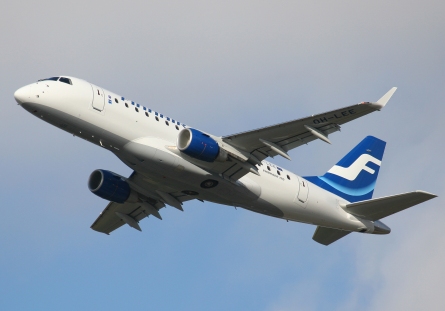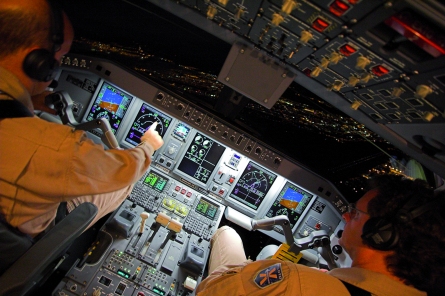Embraer has introduced the four E-jet family members over the past three years. We ask the launch airlines for their judgement on how the new airliner has performed
Last September, when Flybe became the first customer to receive an E-195, Embraer put in place the final component of a four-piece E-Jet jigsaw that it started in March 2004 when it delivered the first E-170 to LOT Polish Airlines. In between, Air Canada was the launch operator of the E-175 in July 2005, while JetBlue Airways had been the first to accept the E-190 in September 2005.
There are 230 E-Jets in service with 31 operators worldwide, and the consensus is that after a disappointing start – first deliveries were more than a year later than first scheduled due to an extension of the flight-test programme and issues with the Honeywell Primus Epic avionics – Embraer and its team of suppliers have been vigorously proactive and worked hard to turn the aircraft into a good performer.
As well as being part of the reason for the original delivery delay, the Honeywell avionics suite has also been subject to a stream of in-service software upgrades to address problems and improve reliability. On the plus side, operators are complimentary about Embraer’s support for the new twinjet, and have had nothing but praise for the General Electric CF34-8E and -10E powerplants.
The E-Jet family can be split into two subvariants, all of which share the same basic configuration including the four-abreast cabin cross-section and five-screen electronic flight instrument system flightdeck. The baseline E-170 and slightly stretched E-175 feature a common wing and 14,200lb-thrust (63.2kN) CF34-8E engines and typically seat 70 and 78 passengers. The
E-190/195 both incorporate larger stretches as well as a bigger wing of increased span and area and more powerful 18,500lb-thrust CF34-10E engines.
The E-190 typically seats 98 passengers, while the larger E-195’s typical accommodation is 108 passengers (for full technical descriptions and cutaways of the E-Jet family members, visit flightglobal.com).
|
|---|
Flybe was launch operator for the latest variant – the E-195 |
Operators’ views
For Flight International’s in-service report on the aircraft that spearheads Embraer’s foray to the edge of the mainline airliner sector, we have canvassed the views of several operators of the aircraft in Asia and Europe. Unfortunately several North American operators we approached – including Air Canada and JetBlue – declined to participate.
For LOT, the selection of Embraer to supply it with a large regional jet to slot in to its fleet below its 737-500s was a logical one as the airline was already an established operator of the smaller ERJ-145 family, and this helped ease what was at times a difficult introduction. “We knew Embraer from the ERJ-145, so have good personal relationships with them, which was extremely helpful at the beginning,” says Krzysztof Buczko, who has been engineering team leader for LOT’s E-170/175 fleet since its introduction in March 2004. The airline now has 16 E-Jets in service – 10 70-seat E-170s and six 82-seat E-175s, which operate across the airline’s European network from Warsaw and outlying cities in Poland.
The airline, along with Alitalia Express, had been due to be the launch operator of the first E-Jet in late 2003. This date itself was itself around a year later than the first delivery target when the E-170 made its first flight in February 2002, at which time Swiss International Air Lines (successor to E-170 launch customer Crossair) was the intended first recipient. However, certification issues delayed the aircraft’s arrival in Warsaw until March 2004. “Embraer was permanently in touch with us ahead of the introduction,” he says.
|
|---|
Finnair was an early European E-170 operator |
Working parties
Being at the sharp end of the introduction of the most sophisticated regional aircraft yet built resulted in some significant issues during the early days of operation, but the airline cannot fault Embraer’s customer support effort and responsiveness. Between 2004 and 2006, LOT organised four working parties covering between six and 10 aircraft, which involved Embraer personnel visiting LOT to implement modifications and upgrades. “The first few working parties were free of charge and involved Embraer sending 30 people to Poland for three weeks,” says Buczko. “Apart from revenue losses from the aircraft being out of service, everything was covered by Embraer.”
Because of the effort to certificate the aircraft, Embraer was initially only able to provide LOT with draft versions of the technical documentation to support the aircraft. During acceptance inspections of the initial aircraft, LOT engineers found the production aircraft differed slightly from the prototypes, which resulted in uncertainties over certain elements. “During inspections we noticed a few new design aspects that we were unsure of, and the Embraer delivery team was also unfamiliar with the aircraft so had to ask the assembly or technical support people,” says Buczko.
LOT’s E-170 introduction was supported in Warsaw by teams of technicians from Embraer and the major vendors. “It was quite an interesting discovery period, not only for Embraer, but also for the vendors,” says Buczko. “After the first few months LOT had accumulated more experience with the aircraft than Embraer had with the prototypes in Brazil, so it was really the operator ‘teaching’ the manufacturer.”
LOT flew the E-170 with a mechanic on all flights for the first six months in service to assist new pilots on the aircraft build experience with the pre-departure checks. This exercise was extended by six months to address reliability issues that mainly centred on the avionics. “We discovered that the avionics were not really mature – especially the software – and there were also new issues to do with the seasons, so we decided to keep the mechanics on board for the winter,” says Buczko.
LOT and Finnair have shared one serious and repeated problem during winter operations with the E-Jet, which Embraer is yet to resolve – jamming cargo doors.
“There is a problem with the door opening mechanism when it gets cold-soaked, which is still not understood well,” says Buczko. “We have followed Embraer’s recommendations, performed modifications and changed the grease used for the mechanism.”
|
|---|
Pilots say the E-Jet's handling qualities are "great" |
Source: Flight International






















